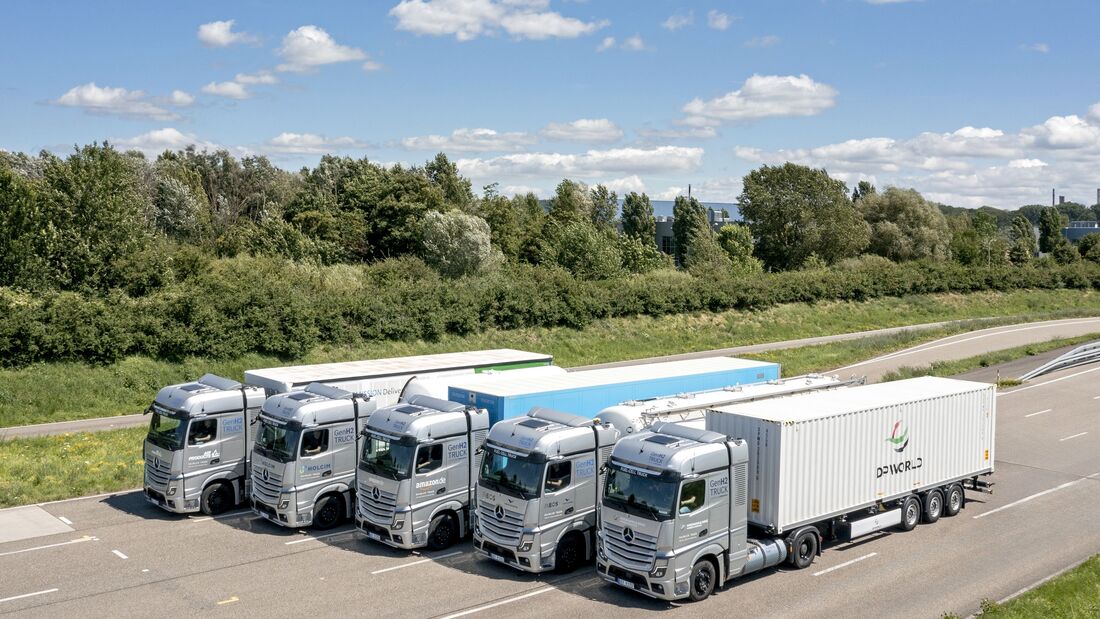Whoever spoke of hydrogen trucks in the past usually had vehicles with hydrogen fuel cells in mind. The technology has now been present in development departments for decades and is still seen as a beacon of hope for the decarbonized future of road freight transport - whenever the routes for battery-electric trucks become too long, the loads too heavy and the performance requirements too great.
The idea: In the fuel cell, the chemical reaction of hydrogen and oxygen generates electricity, which can be converted into propulsion using an electric drive train. The only "waste product" is water vapor.
The implementation: The fuel cell covers the base load, delivering constant and powerful energy. Short-term power peaks are cushioned by a compact buffer battery. A fuel cell truck could thus be more or less just a model variant of a battery-electric truck, and a completely independent truck would not have to be built. This would simplify series production. In addition, the fuel cell truck could continue to recuperate using the electric drive and the buffer battery, i.e. recover and temporarily store braking energy. But there are also challenges: For the chemical reaction of hydrogen and oxygen to form water, the gases must enter the fuel cell as cleanly as possible. With tanked hydrogen, this is still relatively easy. However, the air sucked in must be preconditioned at great expense. For this, no oil must get into the cell. The coolant, in turn, should be as deionized as possible, i.e. barely conductive, so that no current can flow in the event of damage.
Cooling the fuel cell
Cooling a fuel cell is a difficult chapter anyway. Unlike with a combustion engine, several separate cooling circuits are necessary. The cooling requirement is relatively high in comparison - around 50 percent higher than with a combustion engine. At the same time, the temperature difference to the outside temperature is quite small, since the "combustion" of hydrogen and oxygen, from a purely chemical point of view, takes place cold. This is why more coolant is needed and the vehicle needs larger cooling surfaces.
The fuel cell is not without alternatives in the hydrogen chapter. In order to generate energy from hydrogen, it is not necessary to convert it into water in a chemical process with oxygen and generate electricity from it. The hydrogen can just as easily be burned in the traditional way, as is currently done with fossil fuels. The hydrogen reciprocating piston engine scores points because it is very similar to today's common combustion engines. The current diesel engine architecture could therefore remain. The technical basis for this is mature, while the fuel cell is still a relatively sensitive construct. And: the heavier the goods and the more demanding the route - in other words, the higher the required power - the closer the hydrogen combustion engine comes to the fuel cell in terms of efficiency. A truck with a hydrogen combustion engine could recover braking energy using a hybrid drive with an additional electric motor and battery unit.






